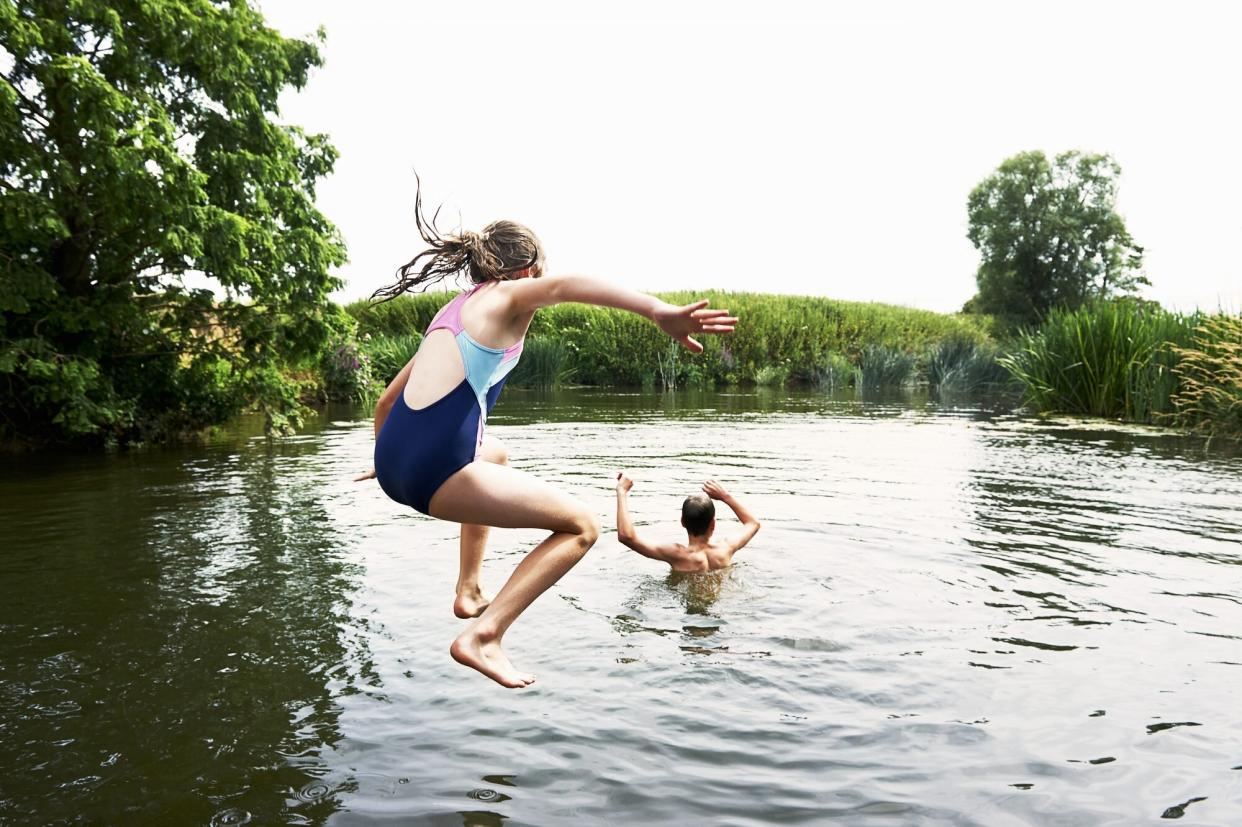How to Tell If It's Safe to Swim in Your Local Lake, River, or Freshwater Pond

Adie Bush / Getty Images
In addition to practicing responsible travel protocols amid COVID-19 and preventing common warm-weather health concerns, is there anything else we need to do in order to safely enjoy our summer vacations? If you and your family are planning to take a refreshing dip in a river or leap off a dock at the nearest lake, it's important to make sure the water is safe to swim in. Luckily, there are ways to do just that. We asked Lisa Dugan at the Department of Natural Resources in Minnesota to enlighten swimmers about safety in freshwater locales.
Related: These Swimming Holes Are Some of Our County's Best-Kept Secrets
Know the environment.
Before dipping a toe into a lake, river, or freshwater pond, it's important to know your surroundings. "First, determine your own capabilities and preparedness prior to jumping into any body of water," says Dugan. She suggests asking yourself if you are familiar with the body of water you're planning to swim, paddle, or boat in. Aside from unseen bacteria that may be lurking in the lapping water, other hazardous factors need to be taken into consideration. Some of these potentially harmful water factors are rip tides, swift water, string underwater currents, and unmarked drop-offs. According to Dugan, other factors caused by recent storms could include raised water levels that cover floating debris.
Understand the local regulations.
A day on a dock, bounding into what seems like a watery unknown, is a highlight of summer. However, knowing the area's regulations before picking up a kayak paddle or strapping on your goggles can keep you safe. All boaters should know their regulations as well as requirements pertaining to the body of water, according to Dugan. For those swimming and paddling (including kayaks and SUP), Dugan suggests not pushing your limits once you get out past the water's edge as water conditions can instantly change and you don't want to be caught in a dangerous situation you can't escape.
When it comes to swimming in natural bodies of water, there are many unknowns such as natural obstacles like low-hanging branches that can be dangerous to paddlers. Dugan calls paddlers and swimmers to keep an eye out for strainers, or branches that act like a sieve, holding the paddler below the surface.
Take these extra safety precautions.
You wouldn't paddle or boat out without wearing sunscreen, so why would you leave your life jacket on land? Dugan emphasizes the importance of wearing a life jacket when spending time on the water. "If you're heading to the water for a break from the heat, remember to make safety part of your preparation for the day," she says. "Pack life jackets for everyone-and wear them! Even strong swimmers can drown after diving off a dock or the back of a boat." Aside from packing the right essentials, having a form of communication (like a cellphone in a dry bag) with you at all times in case of an emergency is key.
Another water safety precaution is to never swim, paddle, or boat alone. Going in pairs and groups allows you to designate a "water watcher." "Drowning in real life often doesn't happen like movies show. Often, the victim isn't yelling, screaming, and waving their arms. Drowning usually occurs quietly-so much so that people who are nearby don't even realize it's happening. Whether you're in a pool or at the lake, always designate a 'water watcher.' This person puts away all distractions-such as their cell phone-and focuses only on keeping an eye on people in the water," says Dugan.

